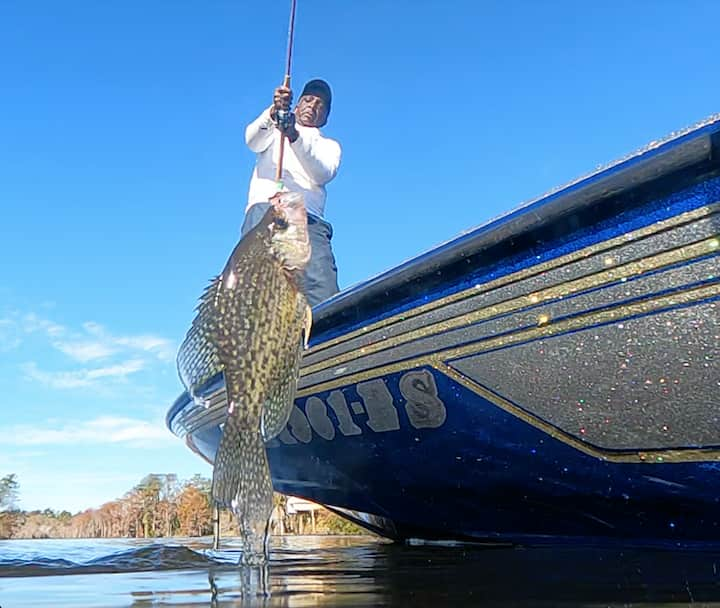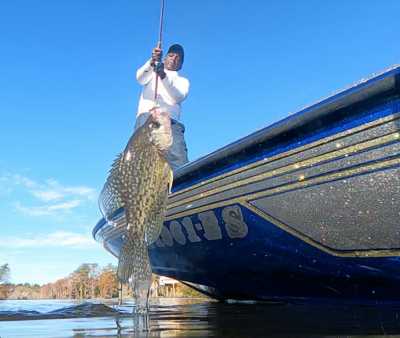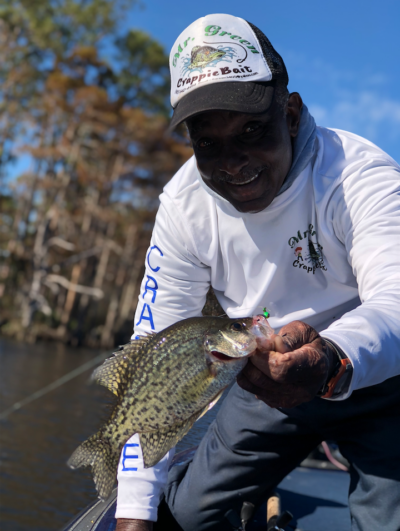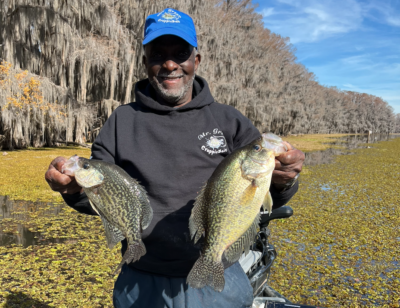Using Corks to Target Deep Crappie
Keith Lusher 02.15.24

It’s not often that crappie anglers start using corks this early in the year. For most anglers, the corks come out when the weather warms up and the crappie are heading into the shallows to spawn. Forrest Green of Lacombe, LA is an admitted cork fishing fool and said he’s been using corks to target his crappie even though the fish are still in deep water.
“Don’t get me wrong, I enjoy tight-lining a jig straight down in 15 feet of water but sometimes those fish hunker down into some serious structure,” he said. “A cork allows me to hover that jig right over the structure and not get snagged so much.”

Green has been fishing Bayou Lacombe in Southeast Louisiana. The Bayou is teaming with crappie. Unfortunately, it’s also plagued with plenty of fallen cypress and wooden trash piles. And while these are instant sac-a-lait attractants, the brush piles can lead to many lost jigs. During February, crappie are often grouped tightly in the structure, and getting snagged can spook the school of fish, which in turn, cause the crappie to vacate the structure. When facing this situation, Green errs on the side of caution. “If those branches on the bottom are just too thick for me to bounce my jig through, I’ll put a cork on my line and rig it so it hovers right over the structure,” says Green. “That allows the tube jig to be in the strike zone of the crappie while staying just above the branches.”

When fishing with a cork Green adjusts the depth and says he’s been known to use a cork in water as deep as 12 feet. Like most fishermen, Green can be picky when it comes to how his fishing equipment performs. When using a cork for crappie fishing, he makes a small modification that allows the float to become more buoyant. He buys two weighted corks. One of them being a 2-inch cork and the other, 1.5 inches. “I remove that lead weight that’s wrapped around the bottom section of the 1.5-inch cork and put the lighter lead on the larger cork,” he says. This prevents the cork from being weighed down too much when I add the 1/16 oz. jig head to the end of the line.”

In February, Green fishes the main bayou and said he’s catching anywhere between 20-30 sac-a-lait per trip by staying in the main bayou and locating huge brush piles in 10-15 feet of water. While the fish are in deep water now, Green said it won’t be long before they head for the shallows for the spawn.

